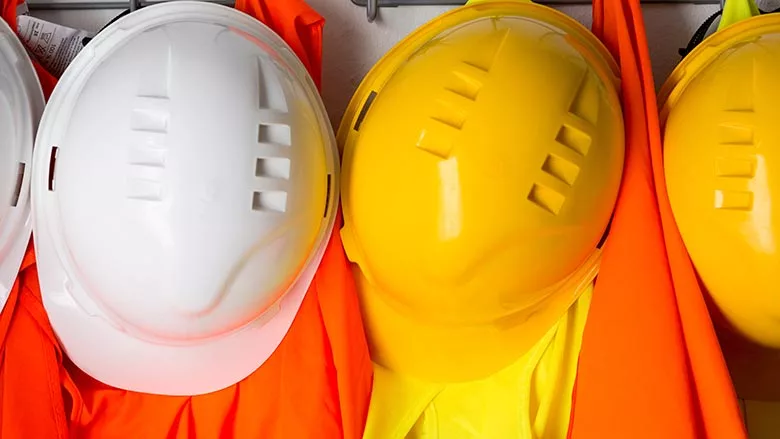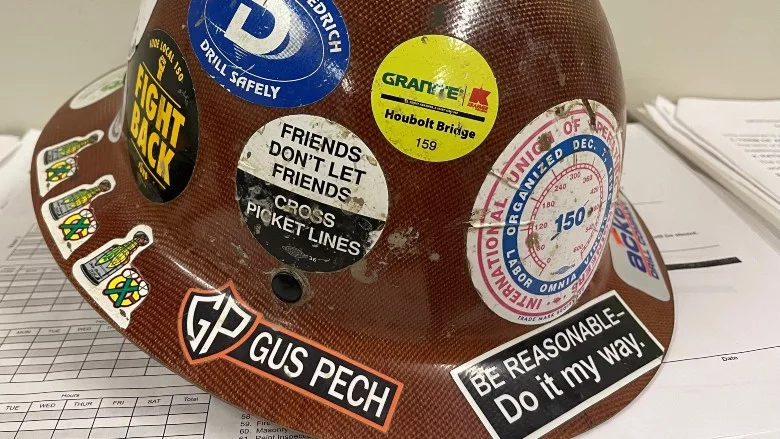Hard Hats versus Safety Helmets for Drilling, Construction
Latest PPE Protects Head from Impacts from Above and Side

In addition to offering better protection from more directions, safety helmets often have a variety of optional add-ons for specific tasks or industries.
Source: Getty Images

Hard hats have taken on a life and culture all their own, but that doesn’t mean there isn’t room for improvement when it comes to PPE.
Source: Dave Bowers
Since the early 1930s, workers have worn hard hats for head protection on jobsites. As early as 1933, projects like the Golden Gate bridge — led by head engineer Joseph E Strauss — mandated that all workers wear a helmet, in this case designed by local manufacturer Edward W. Bullard.
Bullard called his first design the Hard-Boiled Hat. He constructed it by alternating layers of canvas and glue, then steaming the stiff canvas to make it temporarily pliable. Next, he glued together overlapping layers of the canvas to form the shell, covered the shell inside and out with water-resistant shellac, and added leather front and rear brims. The Hard-Boiled Hat met the needs of protecting the workers from falling rivets and other small objects. Workers used it on everything from the Hoover Dam to mining projects deep underground.
Bullard went on to make several improvements to his original design, including an adjustable suspension system that distributed the force of an impact. By 1938, manufacturers commonly made hard hats from aluminum. Eventually, fiberglass, plastic and, recently, carbon fiber designs came along. A construction worker wearing a hard hat has become a symbol of ruggedness, and many adorning their hats with stickers to personalize them.
A hard hat primarily protects the head from objects falling from overhead. However, drilling sites have hazards possible from several different directions.
While hard hats have a nearly 100-year history, a new piece of PPE designed to increase head protection may soon come to a drill site near you: the safety helmet. Safety helmets look more like those worn for mountain climbing, biking, or fire and rescue. They fit closely to the head and have a small brim, protective padding and a chinstrap. A hard hat primarily protects the head from objects falling from overhead. However, drilling sites have hazards possible from several different directions. Think of hoisting rods and casing from sleds or trailers, in addition to flying debris or falling stray tools. Given these job conditions, using safety helmets may better protect the back and sides of the head.
In the United States, the Occupational Safety and Health Administration (OSHA) establishes standards for head safety. According to OSHA, all hard hats must meet the following criteria:
- They must be made of a durable material that can withstand impact.
- They must have a suspension system that helps protect the head from shock.
- They must be designed to stay firmly on the head in the event of an impact.
- They must be the right size for the person wearing the hat. Too small or too large hats can make them less effective.
OSHA also requires wearers to replace hard hats every five years to ensure they continue to meet these safety standards, but many safety helmets are rated to last twice that time.
I know some of you ask, “My hard hat meets all of these criteria, so why change?” Improved head protection benefits many in the drilling industry. Workers benefit from a decreased chance of injury. Contractors benefit from having less lost time and fewer workers’ compensation payouts. Insurance companies benefit from having fewer claims. Safety helmets also often feature more options to customize the helmet for individual tasks or conditions. Visors, sunshades, earmuffs and neck shields are readily available.
Safety helmets may not look the way you envision head protection for a driller to look, but the increased comfort and safety compared to a traditional hard hat should get the industry to take a serious look at making the change.
Until next time stay safe, wear your head protection and keep turning to the right.
Looking for a reprint of this article?
From high-res PDFs to custom plaques, order your copy today!




